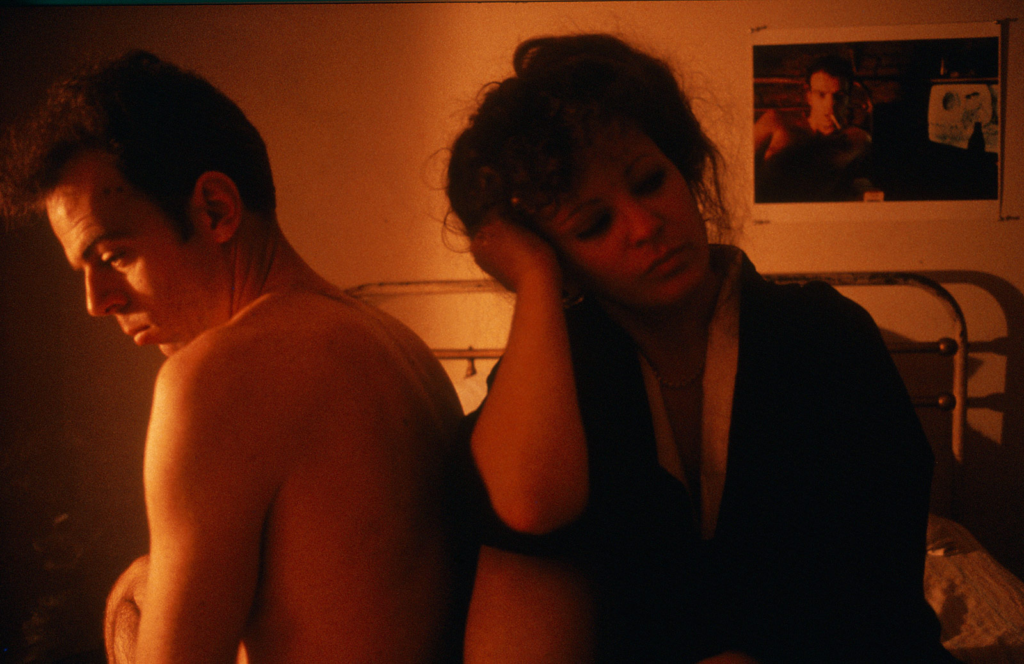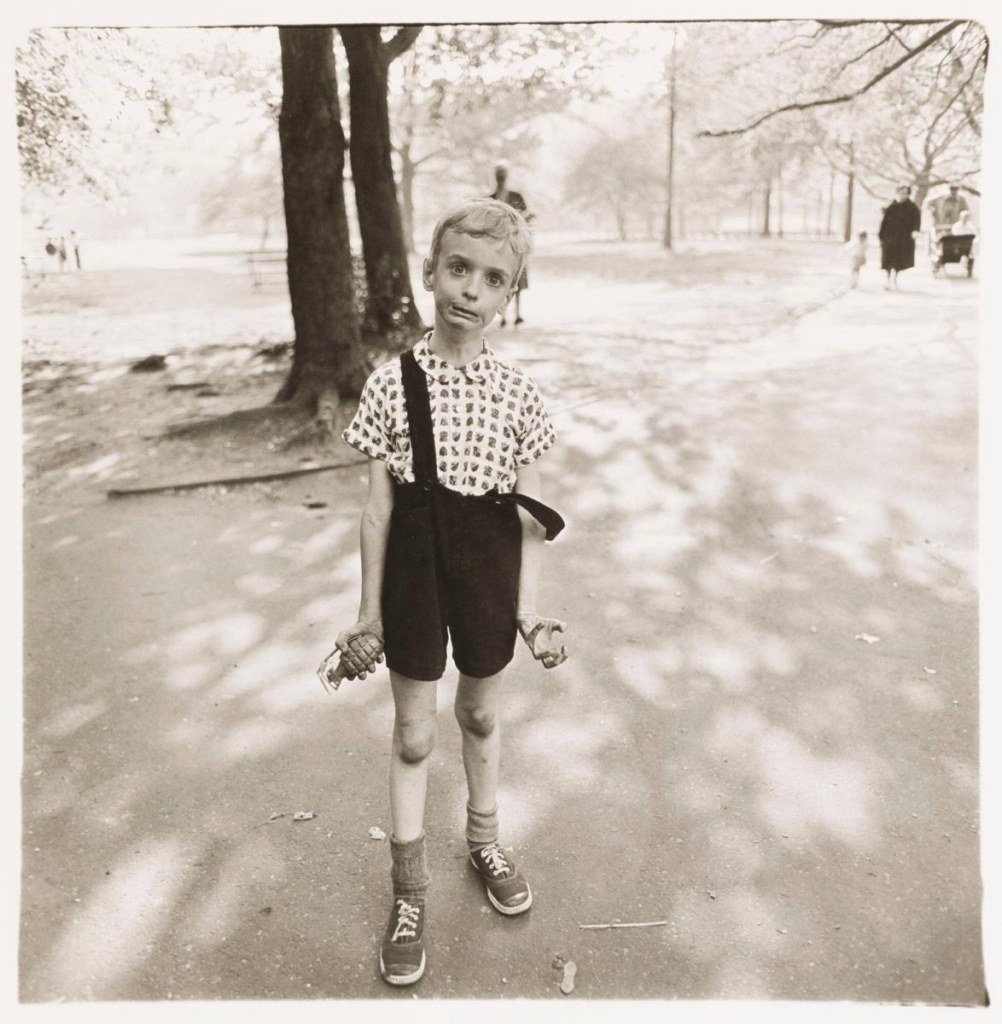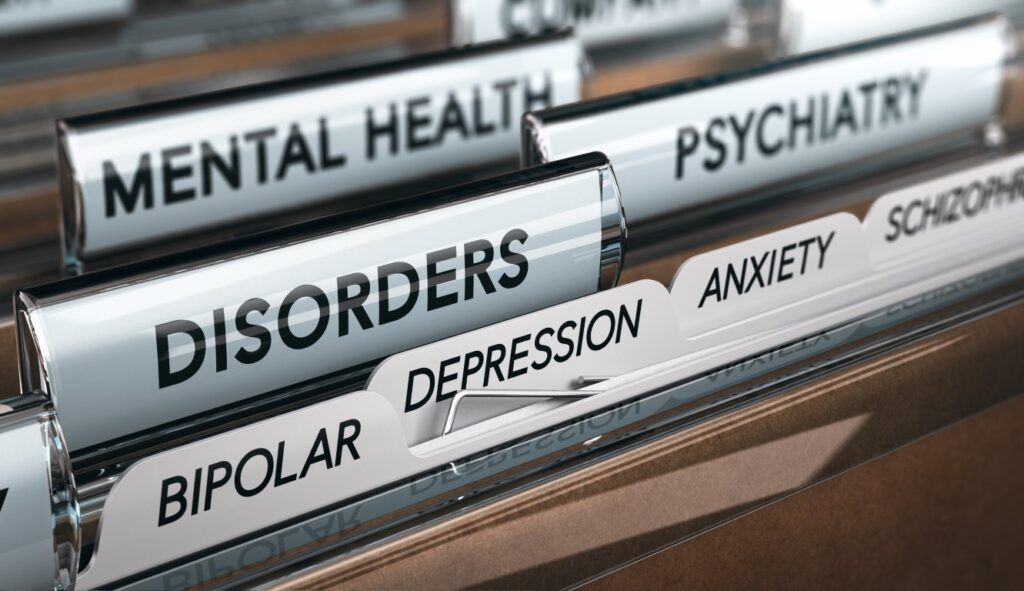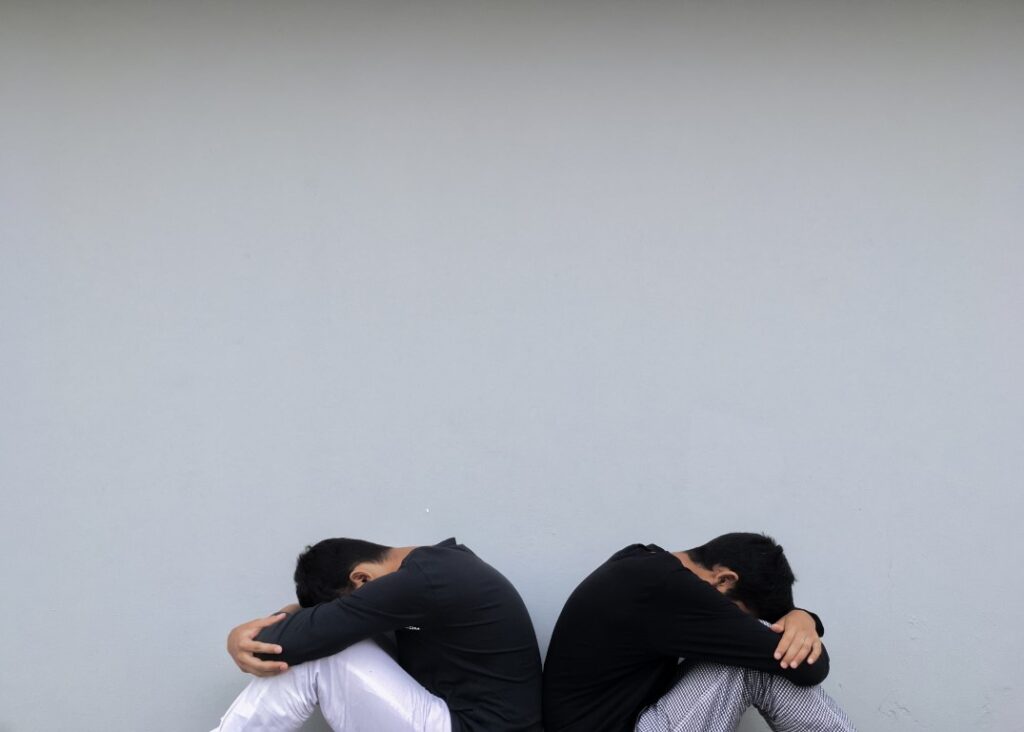Given the immense influence of visual storytelling, photography emerges as a poignant medium to capture the nuances and complexities of mental health. By freezing moments in time, photographers can convey emotions, struggles, and triumphs that essays and explanations might not articulate fully. Through intentional compositions, lighting, and visual metaphors, these artists encapsulate the lived experiences of individuals grappling with mental health conditions. By presenting the experience through visual metaphors, photography can foster both empathy, and a better understanding of neurodivergent experiences.

Mental illness can profoundly impact the lives of millions of individuals worldwide. One in five Americans suffers from mental illness. In India, the National Health Mission puts this number at 6-7% of the population. And given that there are extremely few to no resources for testing and the surrounding social stigma, this number is likely to be extremely conservative. The impact of mental illness extends far beyond the individual level, permeating families, communities, and society as a whole.
While discussions surrounding mental health have gained momentum in recent years, there remains a need to explore alternative means of fostering understanding and empathy. This blog aims to delve into the powerful realm of photography, examining how it portrays and represents mental health. Through the lens of talented photographers, we can gain new perspectives, challenge stereotypes, and cultivate compassion for those living with mental illnesses.
By amplifying diverse voices and perspectives, we can contribute to a society that is compassionate, supportive, and understanding for all.
Understanding Mental Illness Through Photography
Visual mediums have a unique ability to capture the essence of mental illness, offering a glimpse into the inner world of those affected. Through careful composition, lighting, and other techniques, photographers can effectively communicate the emotions, struggles, and experiences associated with different mental health conditions.
One of the primary strengths of photography lies in its ability to freeze a moment in time, allowing viewers to engage with the image and immerse themselves in the depicted reality. By capturing raw and authentic moments, photographers can convey the depth and complexity of mental illness. Whether it’s a portrait revealing vulnerability, an abstract representation symbolizing turmoil, or a documentary-style image portraying daily challenges, each photograph has the potential to elicit an emotional response and generate empathy.

Alice Aedy for I’m Fine / Brainstorm exhibition
Photographers employ various techniques to convey emotions and experiences related to mental health conditions. Lighting, for example, plays a crucial role in setting the mood and evoking specific feelings. Soft lighting can create a sense of intimacy and tenderness, while harsh lighting may depict the stark realities of mental illness. Additionally, the use of color can greatly influence the emotional impact of an image. Subdued tones may convey melancholy, while vibrant hues can evoke hope or resilience.
Framing, perspective, and the inclusion or exclusion of certain elements all contribute to the overall message of the photograph. For instance, a close-up shot of eyes might emphasize the intensity of emotional distress, while a distant perspective might symbolize isolation or disconnection.
Several renowned photographers have delved into the subject of mental illness, using their art to shed light on its complexities and challenge societal perceptions. Here are a few examples:
1. Gauri Gill
In her project “Acts of Appearance” (2015-2017), Gill collaborated with individuals from marginalized communities, including those with mental health conditions, in rural Rajasthan. Through collaborative photographic performances, Gill and her subjects explore the complexities of identity, perception, and self-expression, challenging societal norms and revealing the diverse experiences of those living with mental illness.
2. Sohrab Hura

Courtesy – Sohrab Hura, TrendingMint
Sohrab Hura is an Indian photographer known for his intimate and raw documentation of personal experiences. In his project “Sweet Life” (2005-2010), Hura reflects on his own family’s history of mental illness and the impact it has had on his relationships. Through a mix of photographs, texts, and personal anecdotes, he explores themes of love, loss, and the complexities of navigating life with mental health challenges.

Courtesy – Sohrab Hura/Magnum Photos (India)
3. Dayanita Singh

Courtesy – Dayanita Singh, Pinterest
Dayanita Singh is a renowned Indian photographer known for her introspective and contemplative approach to storytelling. In her project “Dream Villa” (2018), Singh explores the psychological impact of mental illness on individuals and their families. Through a series of photographs and accompanying texts, she portrays the experiences of those living with mental health conditions, shedding light on their daily struggles, hopes, and aspirations.

Courtesy – Dayanita Singh, Pinterest
4. Mary Ellen Mark

Courtesy – Mary Ellen Mark, www.maryellenmark.com
Mary Ellen Mark, a highly respected documentary photographer, devoted her career to capturing the lives of marginalized communities. In her project “Ward 81” (1975), Mark documented the women residing in the psychiatric ward of the Oregon State Hospital. Through her compassionate and sensitive approach, she humanized the subjects, challenging stereotypes and providing a glimpse into the daily struggles and resilience of those with mental illness.
5. Nan Goldin

Courtesy – Nan Goldin, Metal Magazine
Nan Goldin is recognized for her intimate and raw portrayal of personal experiences. Her work often touches upon themes of addiction, self-destructive behaviors, and mental health struggles. In her seminal series “The Ballad of Sexual Dependency” (1979-1986), Goldin documents her own circle of friends and acquaintances, many of whom grapple with substance abuse, trauma, and mental health issues. Her unfiltered and candid images reveal the complexities of these individuals’ lives while offering a poignant commentary on the intersections of mental health and personal relationships.
6. Diane Arbus

Child with a Toy Hand Grenade in Central Park, New York City
Diane Arbus is known for her striking portraits that delve into the fringes of society. In her work, she often portrayed individuals who lived with various mental health conditions. Her photograph “Child with a Toy Hand Grenade in Central Park, New York City” (1962) captures a young boy with an intense gaze and distorted expression, conveying a sense of inner turmoil. Arbus’s compassionate and intimate approach humanizes her subjects, challenging stigmas and providing a window into their inner worlds.
Challenging Stigmas and Breaking Barriers
Photography has the power to challenge stigmas and misconceptions surrounding mental health by providing a visual platform that promotes empathy, understanding, and compassion. Photographers play a crucial role in shaping narratives and influencing perceptions, using their artistic skills to capture the realities of mental illness and counter negative stereotypes. Here’s an exploration of how photography can combat stigma and highlight specific projects that have successfully contributed to reducing stigma through visual representation:
1. Humanizing Portraits:
Photographers can create intimate and humanizing portraits of individuals living with mental illnesses. By capturing their subjects with dignity, respect, and authenticity, photographers challenge stereotypes and invite viewers to connect on a personal level. Through these portraits, viewers can see the humanity and resilience that exists beyond the label of mental illness.
2. Personal Documentaries:
Photographers often engage in long-term documentary projects that provide a comprehensive and nuanced understanding of mental health. These projects focus on the daily lives, challenges, and triumphs of individuals with mental illnesses, aiming to dispel myths and raise awareness. By sharing personal stories and experiences, photographers can educate viewers and challenge preconceived notions.

Lauren Greenfield’s project “THIN”
For instance, photographer Lauren Greenfield‘s project “THIN” explores the lives of women with eating disorders. Through a combination of photographs and interviews, Greenfield brings attention to the complexity of these conditions and the societal pressures that contribute to them. The project serves as a catalyst for conversations, dismantling stigmas and fostering empathy.
3. Community Engagement and Participation:
Photographers can actively involve individuals with mental illnesses in the creative process, empowering them to share their own stories and experiences. By giving participants a voice and platform, these projects challenge stigma and encourage a more inclusive understanding of mental health.
4. Fine Art and Conceptual Projects:
Photographers employ creativity and symbolism to challenge stigmas and misconceptions surrounding mental health. By using visual metaphors and conceptual approaches, these projects invite viewers to think critically and question their assumptions about mental illness.

Courtesy – Laura Hospes, Lensculture
For example, photographer Laura Hospes’ self-portrait series “UCP-UMCG” captures her own experiences with mental health conditions. Through powerful and evocative images, Hospes explores the complex emotions associated with mental illness, aiming to create a visual dialogue that challenges societal perceptions and encourages empathy.

Courtesy – Laura Hospes, Lensculture
Overall, photographers have a significant role in reducing stigma by using visual representation to promote empathy, understanding, and compassion towards individuals with mental illnesses. Through humanizing portraits, personal documentaries, community engagement, and conceptual projects, they challenge stereotypes and create platforms for open dialogue and acceptance. These initiatives contribute to a more inclusive society that embraces the diversity of mental health experiences.
Symbolism and Metaphors in Mental Health Photography
By employing various visual elements such as lighting, composition, and props, photographers can create powerful and thought-provoking images that invite viewers to explore the inner world of individuals living with mental health conditions. Here’s an examination of how symbolism and visual elements are used in mental health photography:
1. Lighting:

Via Pinterest
Lighting is a fundamental tool in creating the mood and atmosphere of a photograph. Photographers often use lighting techniques to convey specific emotions or states of mind associated with mental health. For instance, soft and diffused lighting can evoke a sense of vulnerability, introspection, or tenderness. On the other hand, harsh and dramatic lighting may symbolize inner turmoil, intensity, or the challenges faced by individuals with mental health conditions.
2. Composition:
The composition of a photograph plays a crucial role in guiding the viewer’s attention and creating a visual narrative. Photographers can utilize composition to convey the complexities of mental illness. For example, the use of negative space or isolating the subject within the frame can symbolize feelings of loneliness, alienation, or the struggle to connect with others. Conversely, a composition that includes supportive elements or a sense of community can represent the importance of social support and understanding in mental health.
3. Props and Objects:
Photographers often incorporate props and objects in their images to enhance storytelling and convey symbolic meanings. These props can represent the experiences, emotions, or struggles associated with mental health conditions. For instance, a broken mirror might symbolize shattered self-perception or distorted self-image. Similarly, empty pill bottles could evoke the complexities of medication management and the quest for stability. By carefully selecting and placing these props, photographers can create visual metaphors that invite viewers to reflect on the nuances of mental illness.
4. Color:
Color can be a powerful tool for evoking emotions and conveying meaning in mental health photography. Different colors have distinct psychological associations and can be used to represent specific emotions or states of mind. For instance, cool tones like blue and gray may evoke feelings of sadness, while warm tones like orange and yellow can symbolize hope or resilience. Photographers can use color intentionally to enhance the narrative and convey the emotional landscape of mental health.
5. Visual Metaphors:

Via Pinterest, Petapixel
Visual metaphors allow photographers to express complex ideas or emotions indirectly, inviting viewers to interpret the image on a deeper level. Metaphors can take various forms, such as juxtaposition, abstraction, or symbolic representation. For example, a photograph of tangled or knotted ropes might symbolize the internal struggles and entanglements experienced by individuals with mental health conditions. These visual metaphors encourage viewers to engage with the image and reflect on the multifaceted nature of mental illness.
Self-Expression and Healing Through Photography
Photography can offer therapeutic benefits for individuals with mental illnesses, providing a means of self-expression, healing, and personal exploration. Self-portraits and self-documentation can be powerful tools in this process, allowing individuals to capture their experiences, emotions, and inner world through the lens of their own camera. Here’s an exploration of the therapeutic benefits of photography and the personal stories of individuals who have found solace, empowerment, or catharsis through self-expression in their mental health journeys:

Via Pinterest
1. Self-Expression and Empowerment:
Photography allows individuals to visually communicate their thoughts and emotions, providing a safe and creative outlet for self-expression. Through self-portraits and self-documentation, individuals can assert their agency, reclaim their narrative, and actively participate in their healing process. By actively engaging in the creative process, individuals with mental illnesses can regain a sense of control, empowerment, and ownership over their experiences.
2. Self-Exploration and Reflection:
Photography allows individuals to explore their inner world, thoughts, and feelings, facilitating self-reflection and introspection. By documenting their experiences, individuals can gain insights into their own mental health, identify patterns, and cultivate a deeper understanding of their emotions and triggers. This process of self-exploration can be instrumental in promoting self-awareness and facilitating personal growth.
3. Catharsis and Emotional Release:
Photography can serve as a cathartic outlet, allowing individuals to express and release pent-up emotions. By capturing their experiences visually, individuals can externalize their emotions, providing a sense of relief, release, and catharsis. Through the act of creating meaningful images, individuals can process and make sense of their emotional landscape.
Ethical Considerations in Mental Health Photography
When photographing individuals with mental illnesses, it is crucial to navigate ethical considerations sensitively and responsibly. Here are some key ethical challenges to address, along with guidelines and recommendations for photographers:

1. Informed Consent:
Obtaining informed consent is essential. Photographers should explain the purpose of the project, how the images will be used, and any potential risks or benefits. Consent should be voluntary, explicit, and ongoing, allowing individuals to withdraw their participation at any time. It is crucial to ensure that individuals fully understand the implications of their involvement and have the capacity to give consent.
2. Dignity and Respect:
Photographers should approach mental health subjects with utmost respect for their dignity and autonomy. This includes treating individuals as collaborators in the creative process rather than objects of observation. Avoid exploiting vulnerable individuals or sensationalizing their experiences. Respect their boundaries and preferences regarding what they are comfortable sharing.
3. Privacy and Confidentiality:
Maintaining privacy is of utmost importance when working with mental health subjects. Discuss with individuals the level of privacy they desire and establish protocols for safeguarding their personal information. Consider using pseudonyms or blurring identifying details in the final images or accompanying narratives. Respect individuals’ wishes regarding anonymity and confidentiality.
4. Cultural Sensitivity and Representation:
Recognize the diversity of mental health experiences and avoid generalizations or stereotypes. Be culturally sensitive and ensure that the images and narratives are representative and respectful of diverse perspectives. Engage with individuals from different backgrounds and experiences to ensure their voices are heard and their stories are accurately portrayed.
5. Collaborative Approach:
Involve individuals with lived experiences of mental illness in the creative process. Seek their input, listen to their perspectives, and co-create narratives that accurately reflect their experiences. Collaborative approaches foster empowerment, reduce power imbalances, and ensure that the project is respectful and authentic.
6. Provide Resources and Support:
Recognize that participating in a mental health photography project can evoke emotions and memories that individuals may find challenging. Offer resources and support throughout the process, including access to mental health professionals or support networks. Ensure participants have access to information on how to seek help if needed.
7. Sensitivity to Triggers and Trauma:
Be aware of potential triggers or re-traumatization that photography sessions may elicit. Maintain open lines of communication with participants and create a safe and supportive environment. Be mindful of the potential impact on participants’ mental health and take steps to minimize harm.
8. Use Images Responsibly:
Exercise caution when sharing images to protect individuals’ privacy and well-being. Obtain explicit permission before using the images in public forums or media platforms. Consider the potential impact of the images on viewers and society, and use them responsibly to promote understanding and reduce stigma.
By adhering to these ethical guidelines, photographers can approach mental health subjects respectfully and responsibly. Prioritizing informed consent, preserving dignity, maintaining privacy, and embracing a collaborative and sensitive approach ensures that mental health photography projects are ethical, empowering, and contribute positively to the discourse surrounding mental health.

In the realm of mental health, photography serves as a compelling medium for raising awareness, promoting understanding, and dismantling the walls of stigma. Through visual storytelling, photographers weave narratives that transcend words, capturing the complexities and nuances of the human mind. Within the picture frame lies the potential to ignite empathy, provoke reflection, and foster a more compassionate world.
Take a moment to explore the works of dedicated photographers who courageously illuminate the realm of mental health, challenging misconceptions and inviting us to see beyond the surface. In their images, we may find inspiration, empathy, and the gentle reminder that behind each captured moment lies a profound story waiting to be understood.






